My Question Responses for Strong Towns, Charles County Conversation
By: Paul Guttenberg, Candidate for Town Council Ward I
Strong Towns is a Non-Partisan group that advocates for cities of all sizes to be safe, livable and inviting. They view local government as the highest level of collaboration for people working together in a place, not merely the lowest level in a hierarchy of governments.
The Local Charles County Strong Towns group, called a “Conversation” posed a list of 10 questions to all of the candidates in La Plata’s 2025 General Election. Below are my responses to the Charles County Strong Towns Conversation questions posed to all nine candidates.
Please vote on May 6th and consider voting for me, Paul Guttenberg, as your Ward I Councilman.
QUESTION #1: Do you think our main street/downtown La Plata is successful? If not why not?
Downtown La Plata currently exhibits mixed success. Its walkability, particularly south of Charles Street, a major draw when I moved to Charleston Terrace in 2006, offering easy access to several small shops, four restaurants and two coffee shops at the time remains a key positive aspect. However, the decline in the number of restaurants over the past two decades, despite surrounding population growth, reveals challenges that likely need to be addressed for businesses to thrive in our walkable downtown core.
To fully realize its potential as a vibrant walking downtown center, as envisioned in the comprehensive plan, there's a need to assess how the town can better support existing businesses and explore options to strategically redevelop town-owned properties surrounding the Town Hall. To this end, the Town could specifically encourage the relocation of non-conforming light industrial uses north of Charles Street and near the new Library site to decrease fragmented uses for redevelopment. Additionally, we could consider reduced minimum lot sizes for appropriate downtown redevelopment, and the planning department could prioritize the review of downtown mixed-use and infill projects to accelerate the evaluation of opportunities to revitalize La Plata’s downtown core. Identifying ways to make town-owned properties available for redevelopment that aligns with the comprehensive plan would further attract new ventures that better serve the community's needs and contribute to a more successful and dynamic downtown.
QUESTION #1-a: Do you think the MDOT Route 6 project will help or hurt downtown La Plata? Why?
While the MDOT Route 6 project offers welcome pedestrian safety improvements and may provide a temporary benefit to traffic flow on Charles Street upon completion, I believe its long-term impact will likely hinder the development of a successful and pedestrian-friendly downtown, as envisioned in the town's comprehensive plan. This is primarily because the limitation for streets crossing the rail line will continue to funnel a significant volume of traffic moving between Route 301 and residential areas to the east like Clarks Run, Kings Grant, and Pinegrove directly through the downtown core via Charles Street.
While the Route 6 project addresses some significant needs, the town must adopt a broader, long-term perspective on our entire transportation system. To genuinely benefit downtown La Plata and align with the comprehensive plan, we should seek opportunities to improve traffic circulation town-wide, particularly by exploring solutions like an additional rail line crossing, such as extending Heritage Green Parkway east of Washington Avenue. Integrating the Route 6 project within a larger transportation strategy would ensure it contributes to, rather than detracts from, the ultimate goal of a thriving walkable downtown.
QUESTION #2: How do you feel about the transportation options currently available in our town? Can all of our residents affordably get to where they need to go? If not, what will you do to improve transportation in the town?
Let me give you an example right here in Ward I, where I live, that shows how our transportation network isn't really meeting the needs of residents. For example, when I would drop my kids off at daycare during the dark winter months, I regularly witnessed residents walking along unlit residential streets without sidewalks on Kent Avenue going towards Hawthorn drive. These individuals were walking, I assume based on their work attire, towards jobs in the retail centers along Route 301. This clearly demonstrates a reliance on walking out of necessity, highlighting a gap in safe and accessible transportation options for some of our residents to reach their workplaces.
To improve transportation in our town, I would prioritize a comprehensive approach focused on interconnecting our existing, but currently fragmented, sidewalk and bike trail network. While new developments include these features, we must better address the missing links, particularly in our older neighborhoods and safer ways to cross route 301 as a pedestrian. Completing these connections would enable more residents to affordably and safely walk or bike to key areas such as the retail centers along Route 301, recreational facilities, and future amenities like the new Library. This focus on pedestrian and bicycle infrastructure will not only enhance affordability by providing alternatives to car ownership but also improve safety and accessibility for all residents.
QUESTION #3: What’s more important for our town right now: building new homes and commercial space or rehabbing, expanding, or better utilizing our existing homes and storefronts?
I think the uncertainty surrounding federal government downsizing, along with concerns about how tariffs might affect retail spending, is going to change the outlook for our region's continued growth in large-scale new housing and commercial development. I think this may make redevelopment and changes in zoning a better way to attract economic growth opportunities and defend our property tax revenue in the town.
QUESTION #3-a: Are you in favor of or opposed to the HUB annexation and the new Pinegrove development project? If opposed, why? And how would you advocate to improve these projects?
I think the annexation of the HUB now known as the West Villages of La Plata may have been premature. While there are many features of the West Villages of La Plata that are personally appealing to me, as a councilman I am concerned at this moment in time about our towns ability to provide affordable drinking water and sewer services in a way that does not send the town into a decades long debt spiral that make us financially weaker. If we do some deliberate smart things in the near term, we can position ourselves to be ready in the future to realize the benefits for residents of a project like this. Some of the important things we need to do first are implement an Adequate Public Facilities Ordinance (APFO). We also critically must secure a long-term drinking water source and install sanitary sewer capacity. If these things are not done and the infrastructure costs are not well understood and shared appropriately by the developer, then I would not be in favor of adding additional large development within the town of La Plata.
Both the West Villages of La Plata and the Pinegrove development now being built would benefit from the town of La Plata improving accountability for long term implications of approved plans. I think critically we must do this with an APFO, and also by holding our planning commission accountable for implementing better long-term analysis and the Town Council members being more assertive into the planning process and being publicly accountable for their votes on large development project approvals or denials.
QUESTION #4: Some people in our community say that we have traffic problems. What do you think? How would you mitigate those concerns or change the situation?
Yes, I agree that La Plata experiences some significant traffic problems. While some of this is due to external factors, such as the Route 301 corridor bisecting our town and the recently increased capacity of the Harry Nice Bridge channeling more regional traffic through our area as an alternative to the D.C. beltway, I believe local planning decisions have also contributed to the issue. For instance, the limited access to developments like Steeplechase and the lack of adequate north-south bypasses on the east and west side of town have exacerbated congestion, particularly at the intersection of Route 6 and Route 301.
To mitigate these concerns and change the situation, I would advocate for a more intentional and comprehensive approach to our town's overall transportation strategy. This would involve:
· Developing and implementing a plan for inclusion of north-south bypasses on the east and west side of town to be built into any site master plans that come up for review. The intent of this is to divert some traffic away from the Route 6/Route 301 bottleneck.
· Requiring multiple access points for developments, learning from past situations like Steeplechase.
· Integration of traffic planning into a La Plata Adequate Public Facilities Ordinance (APFO) to mandate standards to ensure that future growth appropriately minimizes traffic impacts and considers the overall transportation strategy before approving any new development.
· Explore opportunities for improving local circulation to reduce reliance on Route 301 and Charles Street for internal trips.
· Continuing to pursue pedestrian and bicycle infrastructure improvements to offer viable alternatives to driving for some residents.
QUESTION #5: If you could change one thing in our zoning code, what would it be and why?
One change I would prioritize in our zoning code would be to introduce specific regulations within our mixed-use zoning districts to prevent the direct adjacency of new 24/7, multi-pump gas stations to higher-density residential developments. The recent construction of a 7-Eleven with an 8-pump gas station directly in front of the new Rosewick Apartments is an example of this problem. This apartment development is a new higher density multi building residential complex in La Plata, which includes many thoughtful higher end amenities. How a new 8-pump, 24/7 gas station was permitted to be built within feet of such a new residential development where now I imagine nearly 1/3rd of the apartments must face the less-than-desirable view of the back side of a 24x7 gas station and convenience store just feet away from their building.
While our current mixed-use zoning technically allows for this type of adjacency, it seems to me to be a lack of foresight and good judgement to allow it. I struggle to understand who, beyond the gas station owner, benefits from this arrangement and why planners allowed it. It's difficult to imagine close proximity to a 24/7 gas station being marketed as an amenity for the Rosewick Apartments, and I believe it likely detracts from the residential property values and the quality of life for the residents living there. Planners should consider these factors, whether they are regulated or not, in this case it is not apparent to me that they did so.
Finally, I want to emphasize the importance of nonpartisan groups like Strong Towns in advocating for zoning improvements in La Plata. Too often, zoning change recommendations come from developers who are primarily driven by profit. Elected leaders and residents would greatly benefit from zoning advocacy rooted in community well-being, independent of profit-driven motives.
QUESTION #6: How do you plan to involve residents in the decision-making process in our town?
As a Town Councilman, my plan to involve La Plata residents in decision-making focuses on these key areas:
First, I want to simplify town information by advocating for easy-to-read summaries of meetings, priorities, issues, and opportunities, which will be made available on the town website and social media. This will help people be more likely to discover and understand what's happening in the town and when their input matters to the decision-making process.
Second, I aim to boost opportunities for resident feedback by advocating for better ways for residents to share their ideas, like quarterly town halls and listening sessions. I will advocate for these town halls to occur not just at our Town Hall but also in La Plata’s neighborhood community centers and HOA shared spaces. More access and participation means the council will have the opportunity to better understand community perspectives on issues.
Third, I want to better leverage local expertise through volunteerism by working with commission and board chairs to create short-term projects, explaining how volunteers help the community, and building partnerships with local organizations. This will allow us to better tap into the knowledge and skills of our residents.
QUESTION #7: If someone came to you with a proposal to build a new piece of public infrastructure within the town, such as a road, bridge, etc, how would you evaluate whether or not that project was worth implementing?
That's an important question. As a Council Member, my evaluation of any proposed new public infrastructure project would be guided by my principles: to look at facts, listen to alternative points of view, be open and honest, consider the future, and always do what’s right.
Applying these principles, my first step would be to look at the facts and assess the project's alignment with the Town's Comprehensive Plan. Because the comprehensive plan is developed with significant public input and coordinated with county and state agencies, it provides a crucial framework for aligning to our community's goals. Ensuring the project fits within these broader objectives is critical for its long-term success and the realization of its intended benefits for the community.
Next, I would undertake a thorough analysis, looking at the facts regarding the project's potential impact and sustainability, while also considering the future:
· Financial Implications: I would examine the potential impact on public debt, the possibility of increased tax revenue, and the long-term costs associated with maintaining both existing and new infrastructure.
· Environmental Impact: I would assess any potential negative environmental effects and explore opportunities for sustainable design and construction.
· Community Benefit: I would evaluate the extent to which the project addresses a clear public need, improves the quality of life for a broad range of residents, enhances safety, or promotes economic development.
Importantly, I would seek and listen to alternative points of view on the project's implications and benefits. Being open and honest in considering these perspectives and being willing to adapt my understanding based on the views of others is essential for making informed decisions.
Only after developing my understanding of these factors, guided by my principles, could I be prepared to determine whether the project is in the public's best interest and therefore the right thing to do and something I would advocate for.
QUESTION #8: If elected, what three steps would you take to put our city on firmer financial footing?
If elected, my approach to strengthening La Plata's financial footing would focus on transparency, responsible planning, and building resilience against economic uncertainties and potential declines in property values. Here are three key steps I would take:
Plan for the Future: A cornerstone of a firmer financial footing is long-range financial planning. This will help us openly discuss and address the reality of rising costs to operate town services and the necessary aging infrastructure improvements within the context of forecasted revenue. I would advocate for a detailed and publicly available review of the 5-Year Capital Improvement Plan (CIP), with a heightened focus on prioritizing essential projects and building flexibility into the timeline. Given the potential for economic challenges and the importance of protecting town revenue, we need to evaluate the necessity and affordability of each capital project and establish triggers for adjusting the CIP based on economic conditions and revenue forecasts. To build resilience against potential economic downturns and declines in property values, we must also stress-test our budget against scenarios of reduced property tax revenue due to declining values or increased delinquencies. Thinking ahead about this risk will better inform our financial planning and help us identify vulnerabilities, allowing us to develop contingency plans that mitigate potential impacts. We should also explore options for phasing projects and aggressively seek grants or low-interest loans for capital projects when required.
Manage Utility Costs: The costs to run the town's utilities (like trash, water, sewer, and stormwater) are increasing because of things like our access to relatively inexpensive ground water being finite (nearing its maximum) and older systems needing upgrades to operate dependably. This has led to higher bills for residents. We should seek potential efficiencies and cost-saving measures within our utility systems. We need to complete a thoughtful town Adequate Public Facilities Ordinance (APFO) to plan the appropriate infrastructure to support the town as it is today, our already approved growth, and to correctly assess any future growth opportunities. The APFO is crucial to hold our planners accountable in the future for assessing impacts of growth opportunities on our long-term financial stability and our access to critical town services. We need to study our service rates to make sure they are set correctly to cover reinvestment needs and the actual cost of providing town services and crucially these studies need to be publicly available. Making sure residents understand the total costs of services and that they are set up to pay for themselves is important for the town's long-term financial stability.
Support and Defend Property Values: Since property taxes are a major source of the town's overall revenue, it's important to take any steps we can to keep La Plata’s property values stable and growing. This will involve investing in things that make the town desirable like having safe neighborhoods, parks and recreation, and well-maintained infrastructure. By focusing on these areas, the town can help protect the value of La Plata’s properties which generate a significant portion of its revenue.
By focusing on these three interconnected steps Planning for the Future, Managing Utility Costs, and Support and Defend Property Values – I believe we can build a more resilient financial future for La Plata.
QUESTION #9: If you received a $1 million grant to use for the town in any way you wanted, what would you do with it and why?
I firmly believe that informed decision-making is the key to maximizing taxpayer value. Therefore, if I received a $1 million grant, I would strategically invest it in infrastructure intelligence tools to enhance automation, data collection, and discoverability of inefficiencies within our town's service infrastructure.
My goal would be to leverage technology to gain a better understanding of how our essential services (water, sewer, stormwater, and solid waste) are operating. This could involve implementing advanced sensor networks, data analytics platforms, and automation systems to accomplish:
Real-time Monitoring: Gain continuous insights into the performance of our infrastructure, identifying bottlenecks, leaks, energy waste, and areas of potential failure before they escalate.
Predictive Analytics: Utilize data to forecast future needs, optimize maintenance schedules, and address potential issues to avoid expensive emergency repairs.
Operational Efficiency: Automate routine tasks, streamline workflows, and identify areas where resources can be allocated and budgeted more effectively, ultimately lowering operational costs.
Data-Driven Decision Making: Provide town staff and leadership with actionable data to make informed decisions about infrastructure investments, resource allocation, and service delivery.
I am confident that an investment in technology and information would over time yield a return exceeding the $1 million grant value. The resulting reductions in operational costs would, over time, be reflected in lower billing rates for our self-funded services, providing real value to La Plata residents. By making our infrastructure more efficient, we can improve long term affordability for our community.
QUESTION #10: What neighborhood do you live in? Why? Where are your favorite places to spend time in our town?
I live on a small street with only 10 houses just off Washington Avenue, close to the county courthouse. I moved here from my two-bedroom townhome in Charleston Terrace because my family was growing, and we needed more space. My wife and I really love La Plata and the surrounding area, so we wanted to stay here. We especially loved being able to walk around downtown, so we looked for a place near it. Where we live now is great because it's close to the farmers market and local shops and restaurants.
Over the years, I've lived in several older neighborhoods, and one thing I've really come to appreciate about them is how some of the older homes have "in-law" suites or separate apartments right on the property near the main house. That really appealed to me as a way to host grandparents and also as a potential space for my kids to live after high school while still having some independence. So, when we were looking for a bigger house, I actually found three different properties in La Plata that had these separate apartments. We ended up choosing our current home on Prospect Street because it had a lot of charm and a separate guest house. We absolutely love having that extra space and have found it's benefited our family in so many ways to have that additional, private living area on our property.
Among my favorite places to spend time in town are Tilghman Lake Park, my family has many good memories in this town park. My kids have all caught fish there, there have been many boy scout events, church picnics, and hundreds of walks around the lake with our family together and with our dog.
For Better Town Government We Must Increase La Plata’s Voter Turn-out For Our Local Elections
Please Vote on May 6th. You can find contact and candidate information for all the general election candidates on the town website. Please also share this information with your friends and family, and encourage them to vote.
Many candidates are also active on Facebook especially within the La Plata Community Group.
A “Vote Local” Plan For Town Council & Mayor
1. Plan To Vote:
Please Plan A Time on Tuesday May 6th You Will Vote at Town Hall.
2. Share Election Information:
Please Share Election Information with Your Family, Friends & Neighbors Who Live in the Town of La Plata. www.voteguttenberg.org/vote-local/
3. Cast Your Ballot On Tuesday, May 6th 2025.
Voting occurs in person at the La Plata Town Hall, located at 305 Queen Anne Street, between 7am and 8pm.
I ask that you consider voting for me as your Town Council representative from Ward I.
More than anything I hope you take the time to vote, and that you encourage others to do the same. When residents vote in larger numbers, it increases the emphasis for elected town leaders to engage and respond to concerns expressed by the public.
Thank you.
Respectfully,
Paul Guttenberg, Candidate for La Plata Town Council Ward I




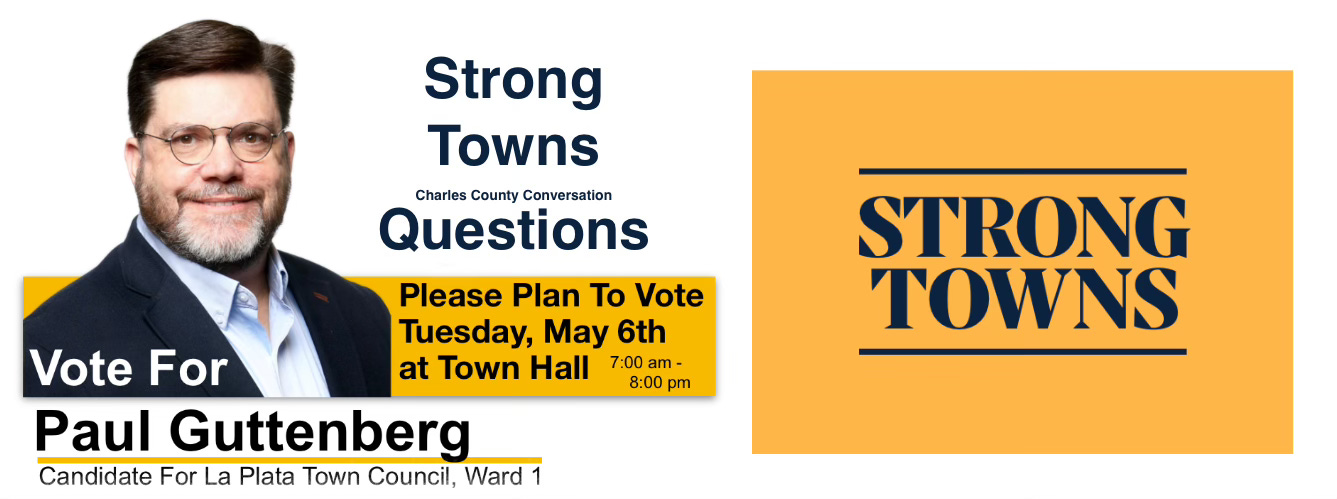

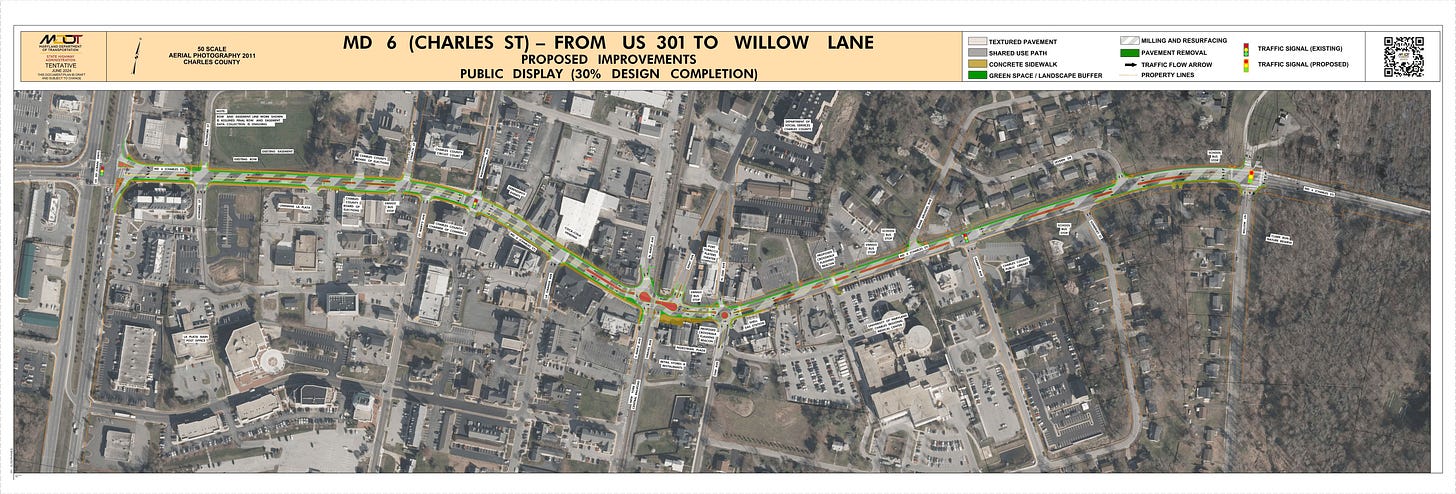

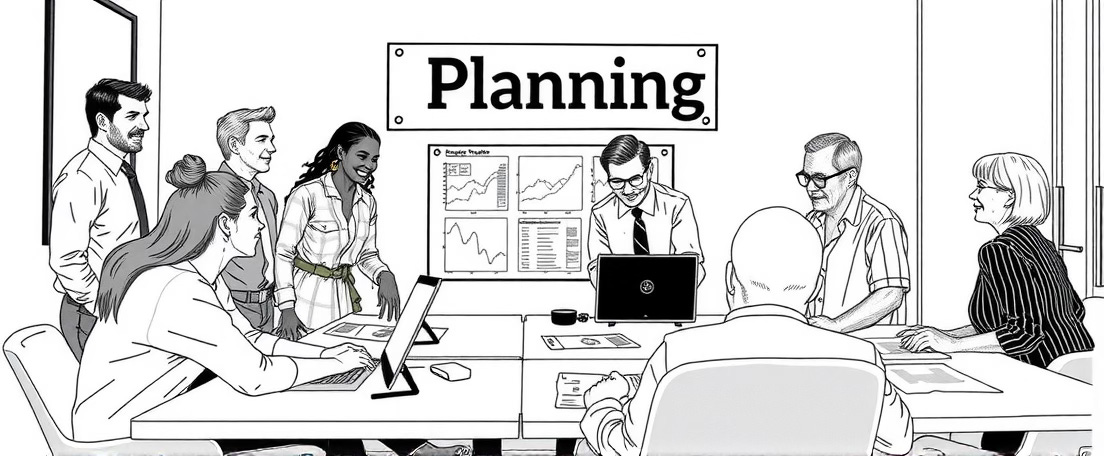


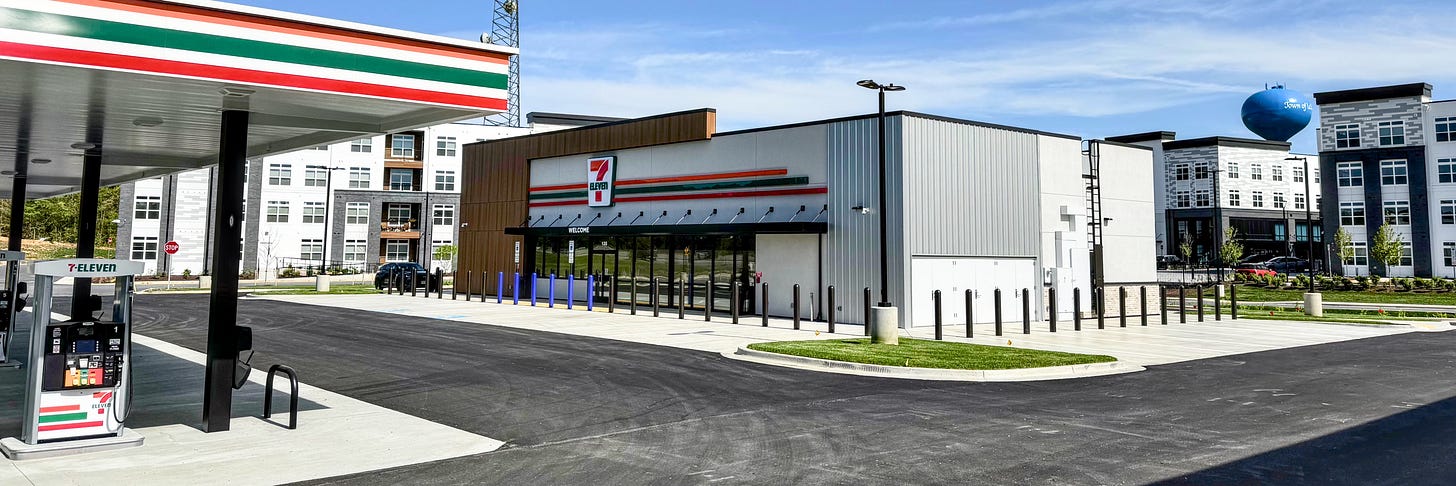
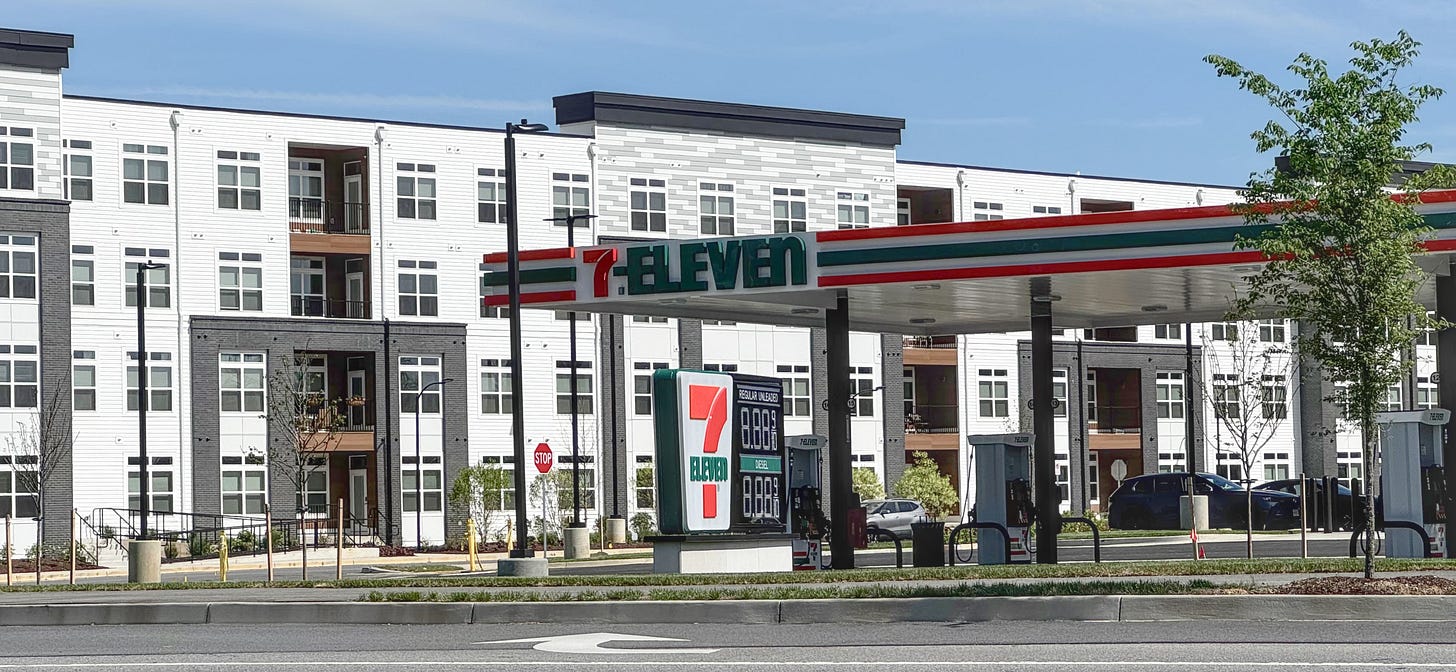


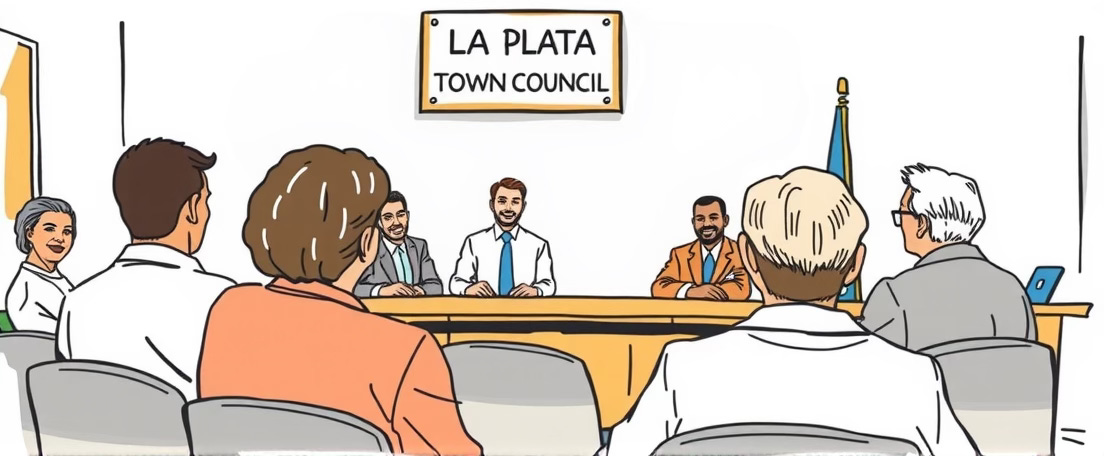


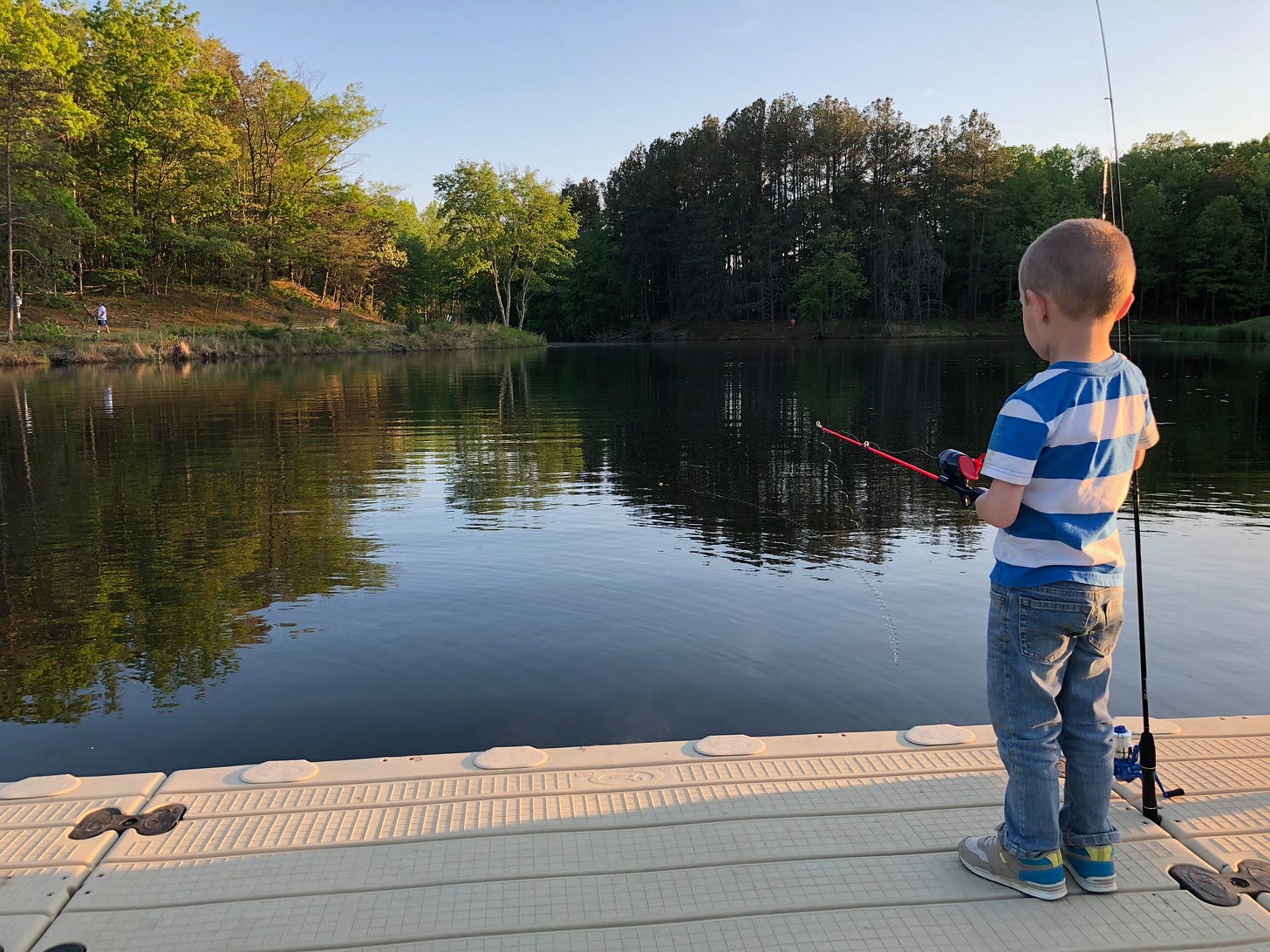
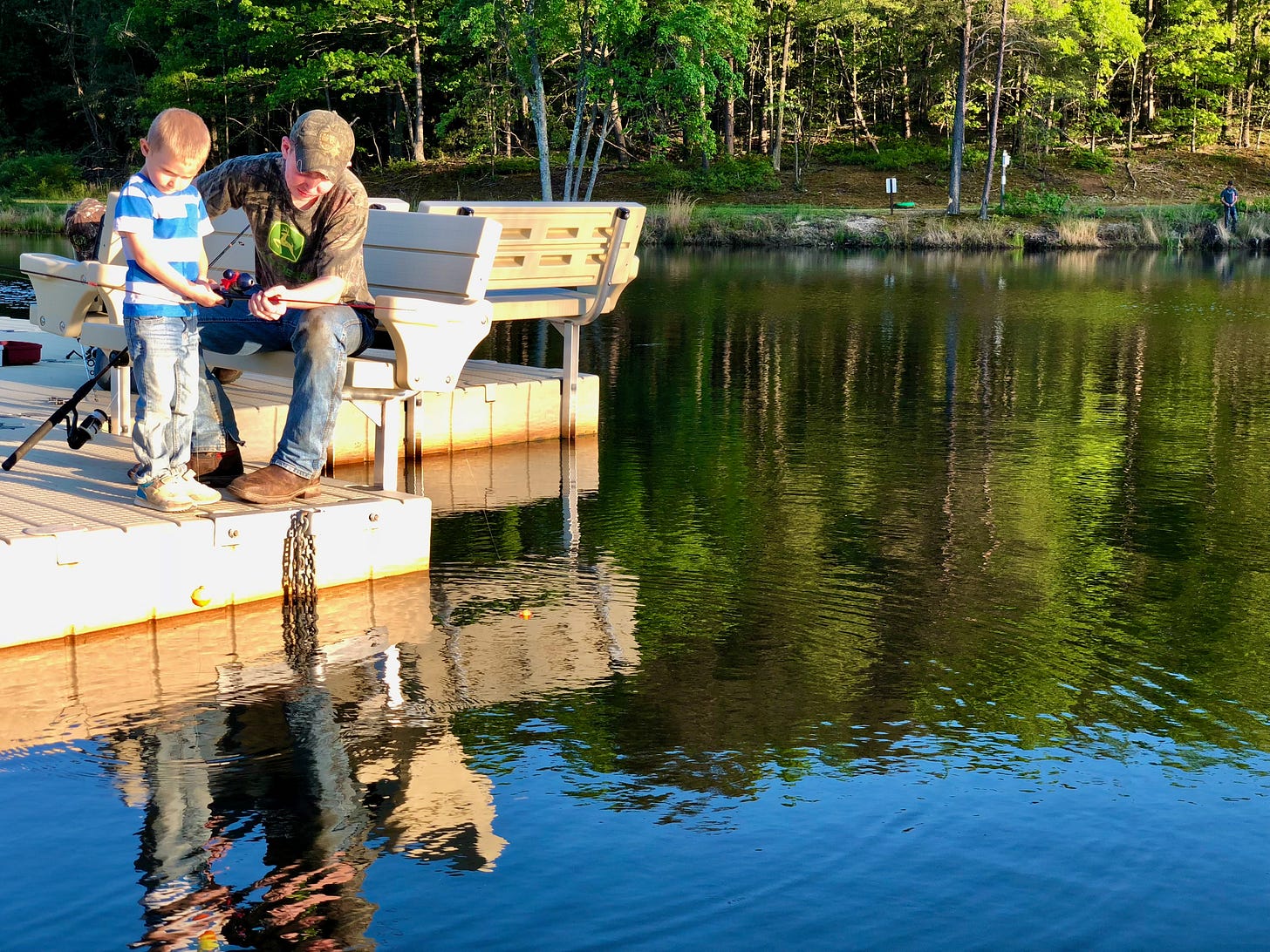


Well done! I{ will forward additional Strong Towns materials, if desired.